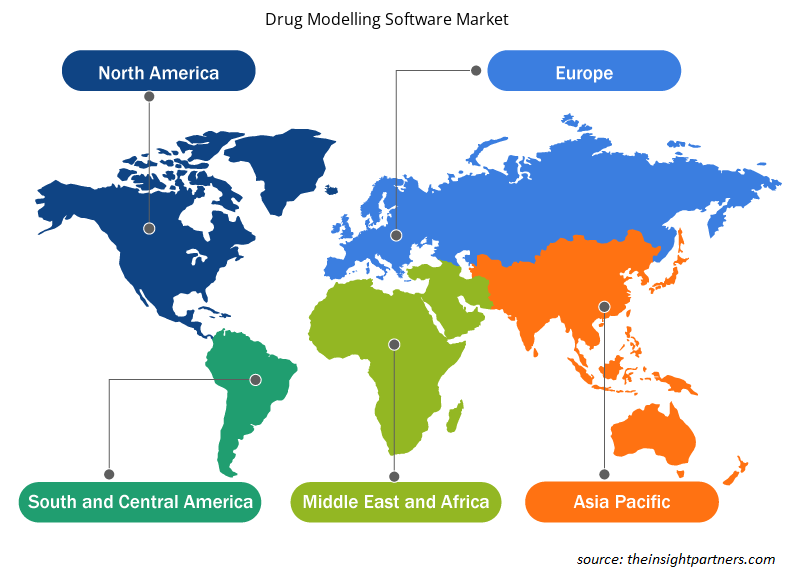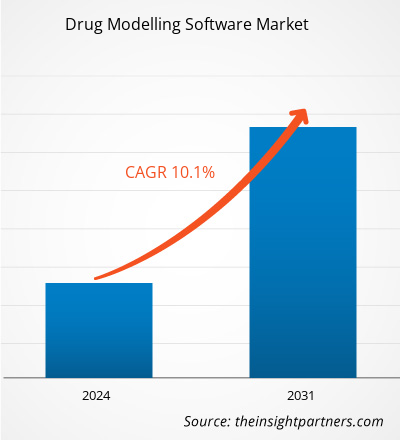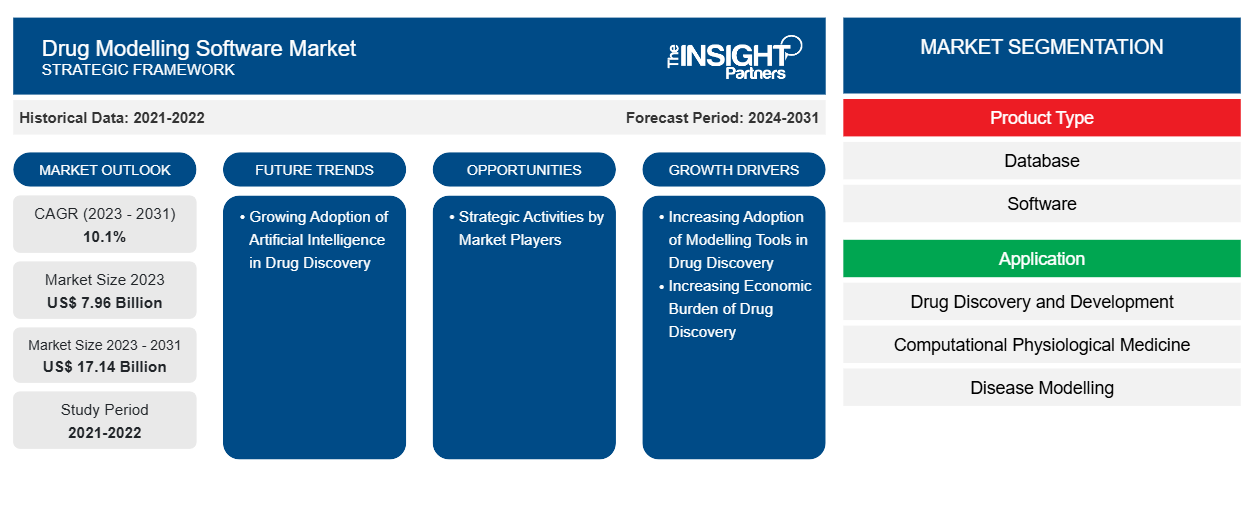药物建模软件市场规模预计将从 2023 年的 79.6 亿美元增至 2031 年的 171.4 亿美元。预计 2023-2031 年市场复合年增长率为 10.1%。药物研发软件中人工智能等先进技术的采用日益增多,这可能仍是药物建模软件市场的主要趋势。
药物建模软件市场分析
心血管疾病、癌症、神经系统疾病等慢性疾病的发病率不断上升,这导致了对治疗这些疾病的新药的需求。制药商和 CRO 为开发新药而开展的研究活动不断增加,这增加了药物建模软件的采用,以增强整体药物发现过程。此外,制药商和软件开发商之间的伙伴关系和合作激增也有望加快整个过程并为药物建模软件做出贡献。
药物建模软件市场概况
药物研发是一个复杂、昂贵且耗时的过程,开发人员一直承受着压力,因为在整个过程中的任何阶段都有可能出现药物失败。整个药物开发大约需要 10-15 年才能完成并商业化开发药物。整个过程需要资金、训练有素的专业人员和机器等资源。大多数制药公司将此类服务外包,这只需要巨额资金。此外,自动化程度的提高进一步导致软件的使用增加,以简化一些工作,从而节省时间。此外,合同研究组织的增加和各种慢性病的流行推动了药物开发活动,这反过来又增加了药物建模软件的部署,从而促进了市场增长。
定制此报告以满足您的需求
您可以免费定制任何报告,包括本报告的部分内容、国家级分析、Excel 数据包,以及为初创企业和大学提供优惠和折扣
-
获取此报告的关键市场趋势。这个免费样品将包括数据分析,从市场趋势到估计和预测。
药物建模软件市场驱动因素和机遇
增加药物研发的经济负担以利于市场
近几年来,已经开发出多种计算工具,用于识别、选择和优化药理学先导候选药物。目前,有多种计算方法可用于药物发现过程。这些工具的预测能力已被证明非常有利,使研究人员能够绕过数十亿个分子的筛选。因此,定量结构活性关系 (QSAR)、建模和计算机辅助药物设计 (CADD) 等计算服务现已成为制药行业不可或缺的一部分。此外,专注于大分子开发的制药公司可能会继续将其各自的药物发现和开发业务外包给药物建模提供商。
市场参与者的战略活动——药物建模软件市场的机遇
从事药物发现和开发的公司正在采用各种商业策略来加快发现时间并提高产品成功率。药物发现的未来依赖于创新生物技术公司、学术界和制药公司之间的合作。此外,参与该领域的多家参与者正在不断扩展其能力,以增强各自的基于计算机的服务组合并保持行业竞争优势。许多制药公司已从采用这些技术中受益,这反过来又有望在预测期内推动药物建模软件的增长。例如,在 2022 年 3 月,Acellera 和 Chemotargets 合作提供药物发现和开发服务,并推进药物开发项目的共同内部渠道。
药物建模软件市场报告细分分析
有助于得出药物建模软件市场分析的关键部分是产品类型和应用。
- 根据产品类型,药物建模软件市场分为数据库、软件和其他。软件部分在 2023 年占据了更大的市场份额。
- 从应用方面来看,市场分为药物发现和开发、医学成像、计算生理医学、药物靶标预测分析、疾病建模、模拟软件、细胞模拟等。药物发现和开发领域在 2023 年占据了市场主导地位。
药物建模软件市场份额按地区分析
药物建模软件市场报告的地理范围主要分为五个地区:北美、亚太、欧洲、中东和非洲、南美和中美。
北美在药物建模软件市场占据主导地位,这得益于人工智能 (AI) 技术在药物发现中的快速整合、对个性化医疗的偏好日益增加、高额研发支出和先进的基础设施是推动市场增长的一些突出因素。在北美,美国是药物建模软件最大的市场,这得益于人工智能在药物发现中的快速整合、对个性化医疗的偏好日益增加、新型治疗应用的研发支出高昂以及主要市场参与者在美国的存在。除此之外,制药公司与人工智能技术公司在药物开发方面的合作和伙伴关系不断增多,进一步推动了市场的增长。此外,发展中地区制药行业对人工智能技术的认识不断提高,进一步证明了市场上的各种增长机会。预计未来几年亚太地区将以最高的复合年增长率增长。
药物建模软件市场区域洞察
Insight Partners 的分析师已详尽解释了预测期内影响药物建模软件市场的区域趋势和因素。本节还讨论了北美、欧洲、亚太地区、中东和非洲以及南美和中美洲的药物建模软件市场细分和地理位置。

- 获取药物建模软件市场的区域特定数据
药物建模软件市场报告范围
| 报告属性 | 细节 |
|---|---|
| 2023 年的市场规模 | 79.6亿美元 |
| 2031 年市场规模 | 171.4亿美元 |
| 全球复合年增长率(2023 - 2031) | 10.1% |
| 史料 | 2021-2022 |
| 预测期 | 2024-2031 |
| 涵盖的领域 |
按产品类型
|
| 覆盖地区和国家 |
北美
|
| 市场领导者和主要公司简介 |
|
药物建模软件市场参与者密度:了解其对业务动态的影响
药物建模软件市场正在快速增长,这得益于最终用户需求的不断增长,这些需求源于消费者偏好的不断变化、技术进步以及对产品优势的认识不断提高等因素。随着需求的增加,企业正在扩大其产品范围,进行创新以满足消费者的需求,并利用新兴趋势,从而进一步推动市场增长。
市场参与者密度是指在特定市场或行业内运营的企业或公司的分布情况。它表明在给定市场空间中,相对于其规模或总市场价值,有多少竞争对手(市场参与者)存在。
在药物建模软件市场运营的主要公司有:
- 冠生生物科技公司
- 化学计算组 Ulc
- Nimbus 治疗公司
- 薛定谔公司
- 达索系统公司
- 基因数据公司
免责声明:上面列出的公司没有按照任何特定顺序排列。

- 获取药物建模软件市场顶级关键参与者概览
药物建模软件市场新闻和最新发展
药物建模软件市场通过收集一级和二级研究后的定性和定量数据进行评估,其中包括重要的公司出版物、协会数据和数据库。以下是药物建模软件和策略市场发展的列表:
- 该公司推出了二十多项新的微服务,让全球医疗保健企业能够从任何地方和任何云端利用生成式人工智能的最新进展。该公司已加速软件开发套件和工具,包括 Parabricks、MONAI、NeMo、Riva 和 Metropolis,现在可以作为 NVIDIA CUDA-X 微服务访问,以加速药物发现、医学成像和基因组学分析的医疗保健工作流程。(来源:NVIDIA Healthcare,Newsletter,2024 年)
- 该公司推出了生物药物设计加速器,这是一个管理肽类药物发现研究过程的平台,许多人认为这是新药开发领域的一个有希望的前沿。(来源:富士通有限公司,公司网站,2023 年)
- 该公司推出了 AIDDISON 药物发现软件,这是第一个软件即服务平台,通过 Synthia 逆合成软件应用程序编程接口 (API) 集成弥合虚拟分子设计与现实世界可制造性之间的差距。它结合了生成式人工智能、机器学习和计算机辅助药物设计,以加快药物开发。(来源:MilliporeSigma,通讯,2023 年)
药物建模软件市场报告覆盖范围和交付成果
“药物建模软件市场规模和预测(2021-2031)”报告对市场进行了详细分析,涵盖以下领域:
- 范围内所有主要细分市场的全球、区域和国家层面的市场规模和预测
- 市场动态,如驱动因素、限制因素和关键机遇
- 未来的主要趋势
- 详细的 PEST/波特五力分析和 SWOT 分析
- 全球和区域市场分析涵盖关键市场趋势、主要参与者、法规和最新市场发展
- 行业格局和竞争分析,涵盖市场集中度、热点图分析、知名参与者和最新发展
- 详细的公司简介
- 历史分析(2 年)、基准年、预测(7 年)及复合年增长率
- PEST和SWOT分析
- 市场规模、价值/数量 - 全球、区域、国家
- 行业和竞争格局
- Excel 数据集
近期报告
相关报告
客户评价
购买理由
- 明智的决策
- 了解市场动态
- 竞争分析
- 客户洞察
- 市场预测
- 风险规避
- 战略规划
- 投资论证
- 识别新兴市场
- 优化营销策略
- 提升运营效率
- 顺应监管趋势























 获取免费样品 - 药物建模软件市场
获取免费样品 - 药物建模软件市场